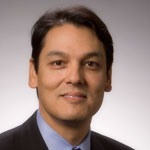After joining custom-shape foam-molder Huntington Foam in 1996 as vice president of sales, Gary McLaughlin helped the company swell from $4 million to $25 million in annual revenue in six years. Despite its ample growth, Huntington went into a voluntary receivership in 2007. When the company’s new shareholders, in the wake of staff member terminations, called him into a Saturday morning meeting, McLaughlin expected to be laid off. Impressed with his Huntington know-how and three decades of experience in the industry, they instead named him president. Now, roughly five years later, Huntington Foam is on track to reach nearly $55 million in sales. In addition, it has grown from 250 employees in 2007 to 420 today, with five plants in the United States and Mexico.
Starting over
The voluntary receivership that occurred in early 2007 was the result of unresolved disagreements with Huntington’s previous management team—and caused some difficulties for the company. “Sales dropped considerably,” McLaughlin says. “We lost some huge customers during that time and a lot of talented employees, and our plants were not left in ideal shape.”
To meet client and production needs, Huntington’s shareholder, Treadstone Partners, approved investments to help refurbish facilities and equipment. Three members of the Dallas-based company also acted as de facto mentors to McLaughlin when he took over as president in 2007, assisting with key decisions and operational aspects. As he began to rebuild the company, McLaughlin rehired a number of dedicated employees who had been let go. “Coming from the industry, I knew where people had landed and was able to rustle the weeds a bit, find them, and bring them back in,” he says.
McLaughlin was thrilled to bolster Huntington’s staff with what he calls an A-Team of financial, sales, production, and engineering professionals. “The custom-shape molded business is such a niche industry—it’s tough to find the right people,” he says. “But being able to surround myself with such a good staff definitely helps. We were able to grow and diversify during tough, tumultuous times.”
Moving forward
McLaughlin says he had occasional doubts during his first year at Huntington’s helm. Still, as all the staffing and financial pieces fell into place, McLaughlin’s confidence grew. By 2009, the company’s plants were again fully operational, and McLaughlin traveled frequently to Mexico to ensure the plant’s employees felt like they were part of the Huntington team.
With Huntington unified and enthused, 2010 “was a great year,” McLaughlin says. “And in 2011 and 2012, we grew stronger and weathered the tough economic climate.”
The company continued to expand its relationships with clients and vendors in Japan, South Korea, Canada, and South America. Huntington also kept producing the innovative, clear-view packaging product line that it had introduced in 2007, which lets manufacturers wrap appliances in a foam skeleton and transparent film to save on shipping and to easily see transport-related damage.
Further, the company diversified to supply car manufacturers with energy-absorption safety products for side impact and bumpers, made from lightweight expanded polypropylene. “We’re more than just a packaging company now,” McLaughlin says. “We’ve seen a lot of growth in that sector.”
A bright future
McLaughlin is a big believer in visual aids—he describes his office, which is decked out with six whiteboards and a map of North America marked with the locations of competitors and customer locations, as a war room. So it’s not surprising that his first concrete recovery signs came from McLaughlin’s many charts mapping the company’s progress. “I knew we had turned the corner just because everything was trending in the right direction, finally,” he says.
After Huntington reaches its 2013 $55 million sales goal, McLaughlin has set a $100 million target by 2017. “Some have told me it’s overly ambitious,” he says. “But I’ve told everyone to have the same goal on their list. Everyone needs a big goal.”
McLaughlin means that literally—he carries around a pocket notebook to jot down his personal daily goals and encourages other Huntington employees to also track their tasks. And though the lists may be different than they were five years ago, the projected growth that McLaughlin’s got in mind means they’re no less important.
“If you don’t have the small goals planned out for each day, week, or month, it’s going to be impossible to reach those long-term goals,” McLaughlin says. “Things are not always going to go as planned—but you need to have a plan to deviate from.”

